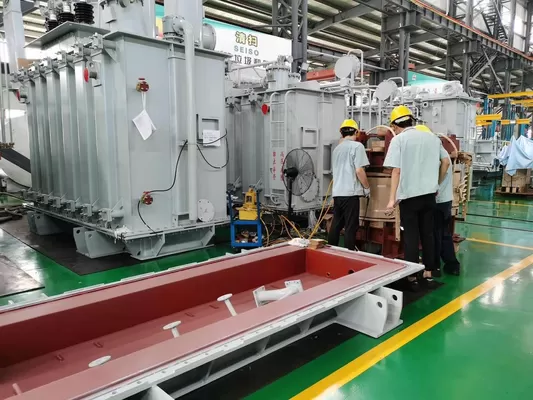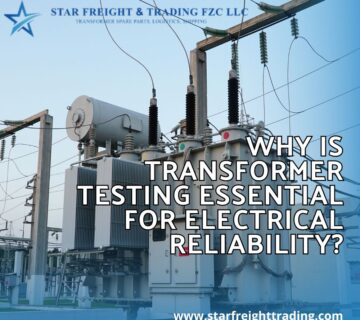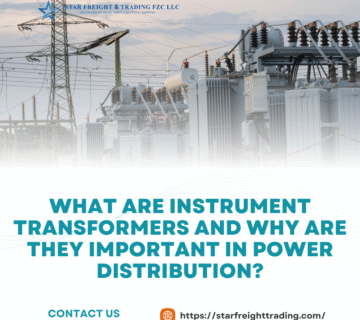Electricity powers everything around us—from homes and high-rises to malls, metros, and massive industrial plants. But the electricity that travels through these networks comes in two forms: Alternating Current (AC) and Direct Current (DC). Each has its strengths and limitations. The big question, especially in a fast-developing nation like the UAE, is: which current type better serves its expanding, energy-hungry power grid?
This blog takes a deep dive into AC and DC currents, compares their technical differences, explores their practical applications, and finally, discusses which system is more suitable for UAE’s current and future power grid.
Understanding the Basics: AC vs DC Current
Before exploring their relevance to the UAE, it’s important to understand what sets AC and DC apart.
What Is AC (Alternating Current)?
AC current changes direction periodically—typically 50 or 60 times per second (known as Hertz). In most countries, including the UAE, the standard frequency is 50Hz. The voltage in AC also alternates from positive to negative in a wave-like form.
AC is the dominant current type in power grids worldwide because of its ease of generation, transformation, and transmission over long distances.
What Is DC (Direct Current)?
DC current flows in a single, consistent direction. The voltage remains steady and does not fluctuate over time. DC is commonly used in batteries, solar panels, and electronic devices.
Unlike AC, DC is difficult to transmit over long distances due to higher energy losses and the lack of efficient transformation technology—although this is changing with modern converters and HVDC (High Voltage Direct Current) systems.
Why AC Became the Backbone of Global Power Grids
AC gained popularity in the early 20th century primarily due to ease of voltage transformation. Using transformers, electricity could be stepped up to high voltages for long-distance transmission and then stepped down for safe use in homes and businesses.
Key advantages of AC in grid infrastructure:
-
Easier to transform voltage levels
-
Less energy loss in long-distance transmission
-
Lower infrastructure costs
-
Compatibility with existing global systems
For this reason, the UAE’s national power grid is primarily based on AC transmission, with voltage levels ranging from low voltage (400V) to high voltage (132kV and above), especially for inter-emirate transmission lines.
Applications of DC Power in UAE
Although AC dominates the grid, DC is growing in relevance in niche and emerging areas.
Solar Power Systems
The UAE is investing heavily in renewable energy, especially solar power. Photovoltaic (PV) panels generate electricity in DC. This is then converted to AC using inverters before being supplied to the main grid.
In large-scale solar farms like the Mohammed bin Rashid Al Maktoum Solar Park in Dubai, DC power is generated, stored in batteries (also DC-based), and then converted to AC for distribution.
Battery Storage Systems
Battery energy storage systems (BESS) are an important part of smart grid infrastructure. These systems store power in DC and require bidirectional converters to handle both incoming AC from the grid and outgoing AC to consumers.
Data Centers and Electronics
Modern electronics operate internally on DC. Some large-scale data centers are experimenting with DC microgrids to eliminate conversion losses and improve energy efficiency.
Challenges of DC Integration
Despite growing interest, DC has limitations that make it less suited as a complete replacement for AC in national grids.
-
Conversion Complexity: DC needs inverters to convert power for traditional use, adding cost and energy loss.
-
Infrastructure Overhaul: UAE’s entire grid is built for AC. Switching to DC would require a massive and impractical overhaul.
-
Safety Concerns: Interrupting high-voltage DC is more complex and dangerous than AC due to the absence of zero crossing in the waveform.
The Role of HVDC in UAE’s Energy Future
One exception where DC is showing strong potential is in High Voltage Direct Current (HVDC) transmission. HVDC allows very long-distance power transmission with minimal losses and is often used for cross-border electricity trading or connecting remote renewable energy sources to the grid.
For example, the GCC Interconnection Authority (GCCIA) has considered HVDC links between Gulf countries to enhance regional energy sharing, reliability, and stability. UAE may eventually benefit from HVDC for renewable integration or power trading with Saudi Arabia, Oman, or even farther regions.
AC Dominance in UAE: The Practical Perspective
From a practical standpoint, AC is currently more suitable for the UAE’s national power grid because:
-
It aligns with existing infrastructure across all emirates
-
It offers reliable performance in urban, industrial, and rural zones
-
It supports long-distance transmission across desert and remote areas
-
It is compatible with transformers, switchgears, and distribution systems already in use
Moreover, equipment suppliers like Star Freight Trading continue to support the AC-based infrastructure with high-quality spare parts, including transformer oils, bushings, Buchholz relays, and other essentials needed to keep the AC-powered grid running efficiently.
The Hybrid Future: AC Grid with DC Pockets
The future of the UAE’s grid is not a question of AC vs DC, but rather AC with DC integration. As the energy landscape becomes smarter, greener, and more decentralized, we are likely to see:
-
AC grids powering large cities and industries
-
DC microgrids in remote or off-grid areas
-
Solar farms feeding DC power into battery systems
-
Smart converters handling seamless AC-DC transitions
This hybrid approach allows the UAE to maintain the reliability of AC while exploring the efficiency and control benefits of DC in specific applications.
How Star Freight Trading Supports UAE’s Grid
As a UAE-based supplier of transformer spare parts and power infrastructure components, Star Freight Trading plays a key role in supporting both traditional AC systems and new energy solutions. Whether your needs involve AC transformers, relays, insulating fluids, or system maintenance, Star Freight ensures your equipment performs reliably in UAE’s demanding climate.
With the country rapidly advancing toward a smart and sustainable energy future, access to high-quality parts, technical expertise, and supplier support will be crucial.
Final Thoughts
So, which current is more suitable for the UAE’s power grid? In today’s context, AC remains the most practical and widely supported option. Its compatibility with existing infrastructure, scalability, and cost-efficiency make it the foundation of UAE’s national power system.
However, DC is gaining ground—especially in renewable energy, battery storage, and high-efficiency transmission projects. The future will likely be a blend of both, with AC powering the backbone of the nation and DC offering specialized support in clean energy and smart technologies.
Whether it’s AC or DC, Star Freight Trading ensures your system stays powerful, efficient, and future-ready.





No comment